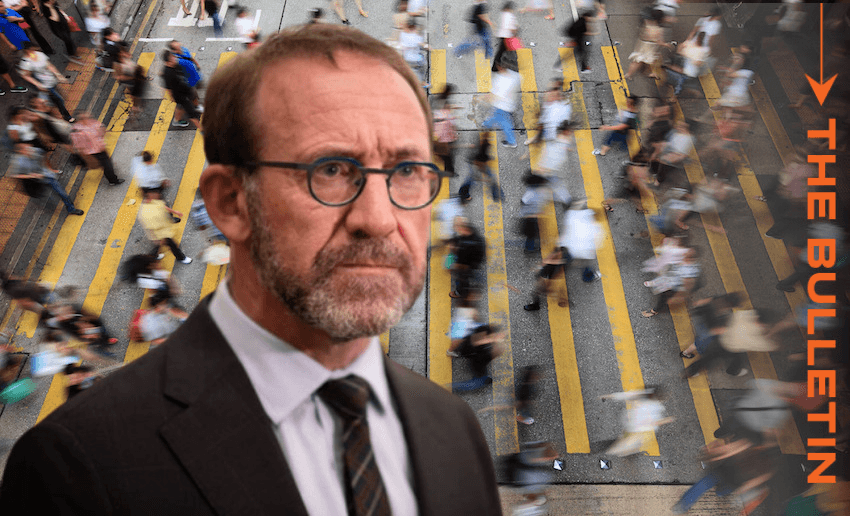With the former Labour leader ‘80%’ certain to throw his hat in the ring for the capital’s top job, Tory Whanau’s life just got a lot harder, writes Catherine McGregor in today’s extract from The Bulletin.
To receive The Bulletin in full each weekday, sign up here.
A political heavyweight returns?
It’s not every day a former party leader comes knocking on the doors of local government – but that’s exactly what looks set to happen in Wellington. Andrew Little, once the Labour leader who famously made way for Jacinda Ardern, is “80%” sure he’ll contest the capital’s mayoralty in October, according to a source who spoke to The Post’s Andrea Vance (paywalled). He confirmed to Jo Moir of RNZ that he’s seriously considering a run, and a source close to him – perhaps the same one Vance chatted to? – said he’s been approached by “a wide range of people from all walks of life in Wellington” concerned about the state of the city.
Now a legal consultant, Little would bring formidable political weight to the race, having held 12 ministerial portfolios including health, defence and Treaty negotiations. If he follows through, he’ll join a crowded field already featuring incumbent Tory Whanau, councillor Ray Chung, former councillor Rob Goulden, conservationist Kelvin Hastie, businessman Karl Tiefenbacher and media personality Graham Bloxham.
Whanau wins Green Party backing
Whanau, meanwhile, is pitching herself as the candidate of continuity – and is now officially endorsed by the Green Party. It’s a reunion of sorts: while Whanau ran as an independent in 2022, she was previously the Greens’ chief of staff in parliament, and rejoined the party last year after putting her membership on hold. The relationship hasn’t always been easy – her backing of the airport share sale and the controversial Reading deal sparked frustration among party members – but the endorsement means Whanau will have access to Green campaign volunteers and funding support.
Whanau recently acknowledged she nearly didn’t stand again, after a bruising couple of years that included a public struggle with alcohol and an ADHD diagnosis. But speaking at a public event in March, she said she’d regained her ambition after spending time building resilience and connecting with her iwi. Having grown a thicker skin, she said “it would almost be a tragedy to step down and not be a voice for those who may not have a thick skin right now”.
Labour freezes out its star Yimby
One person who may have felt a pang of envy over the Green Party’s loyalty to Whanau is councillor Rebecca Matthews. Despite being a leading pro-housing voice and architect of major reforms to Wellington’s district plan, Matthews won’t be standing for Labour in the Onslow-Western ward this year. According to The Spinoff’s Joel MacManus, “the relationship between Labour and Matthews has grown frosty” over her perceived lack of opposition to the airport share sale, despite the councillor voting against the deal three separate times. “The ordeal dredged up old trauma of asset sales and apparently left Labour Party members with bad blood towards Matthews, whom they perceived as not having done enough to stop it,” wrote MacManus. Whanau later told MacManus she’s “trying to poach Rebecca for our team… we’d be lucky to have her.” If Matthews does switch sides, it could be a significant gain for the Greens – and a puzzling loss for Labour.
Tension at the top in Auckland
Further north, Auckland’s mayoral contest is also simmering. Incumbent Wayne Brown has confirmed he’ll stand again – and this week texted an apology to his deputy, Desley Simpson, after suggesting to the NZ Herald’s Simon Wilson (Premium paywalled) that she only cared about helping her constituents buy Lamborghinis. Simpson, who represents the well-heeled Ōrākei ward, says she hasn’t decided yet whether to run – but speculation is building. Her son registering the domain name desleyformayor.co.nz raised eyebrows in January, and while she insists it was “a bit of a laugh”, it seems clear that she’s seriously thinking about throwing her hat in the ring.


